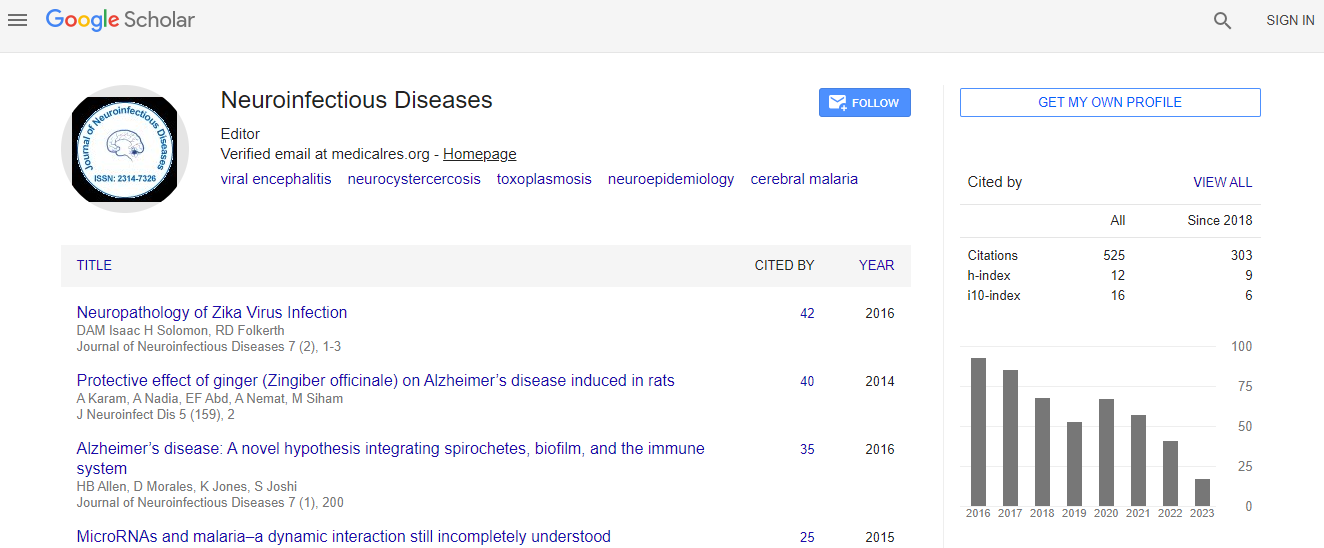Research Article
Frequency of Hyponatremia in Central Nervous System Infections
| Samar Abbas Jaffri1* and Tasnim Ahsan2 | |
| 1St. Luke‘s Hospital, Ireland | |
| 2Jinnah Postgraduate Medical Centre, Pakistan | |
| Corresponding Author : | Samar Abbas Jaffri Medical Registrar at St. Luke‘s Hospital Ireland Tel: 00353899880168 E-mail: abbasraza569@hotmail.com |
| Received: June 11, 2015 Accepted: July 20, 2015 Published: July 24, 2015 | |
| Citation: Abbas Jaffri S, Ahsan T (2015) Frequency of Hyponatremia in Central Nervous System Infections. J Neuroinfect Dis 6:179. doi:10.4172/2314- 7326.1000179 | |
| Copyright: © 2015 Abbas Jaffri S. This is an open-access article distributed under the terms of the Creative Commons Attribution License, which permits unrestricted use, distribution, and reproduction in any medium, provided the original author and source are credited. | |
| Related article at Pubmed, Scholar Google | |
Abstract
Central nervous system infections (CNS) limited to the meninges or with brain parenchyma involvement are common causes of hospital admissions. Sodium disorders are associated with considerable morbidity and mortality. Hyponatremia is a common electrolyte disturbance and is a common finding in patients with acute cerebral insult. Current study is plan to ascertain the frequency of hyponatremia in CNS infections, to identify regular screening, as CNS infection, treatment and management is emerging as a great challenge especially in the setting of hyponatremia and its complication. In this study our aim was to determine the frequency of hyponatremia in patients with CNS infections attending tertiary health care hospital. This study was conducted in Jinnah Postgraduate Medical Centre (JPMC), Karachi, Pakistan from 6th May 2014 to 6th November 2014. Total duration of this study was six months. It was a cross sectional study and a total of 192 patients with CNS infections presenting to Hospital were included in this study. Brief history and physical examination was done. Blood sample was collected in a sterile manner for serum sodium levels and was sent to lab. Serum sodium level <130 mmol/L was considered as Hyponatremia. The findings of variables were entered in proforma. Our results showed that the average age of the patients was 43.41 ± 13.64 years. Frequency of hyponatremia in patients with CNS infections was observed in 42.71% (82/192) patients. Frequency of hyponatremia was significant among different age groups, while frequency of hyponatremia was not significant between gender and difference duration of disease Sodium disturbance is serious co morbidity in the neurosurgical population. Physicians should focus on the volume status of hyponatremic patients with neurologic disease to differentiate between Cerebral Salt Wasting (CSW) & Syndrome of Inappropriate Anti Diuretic Hormone (SIADH), because the treatment of the two conditions differs. Healthcare providers should recognize the significance of sodium dysregulation among this population and distinguish between the various therapeutic options in order to advocate safe and effective therapy.

 Spanish
Spanish  Chinese
Chinese  Russian
Russian  German
German  French
French  Japanese
Japanese  Portuguese
Portuguese  Hindi
Hindi 
